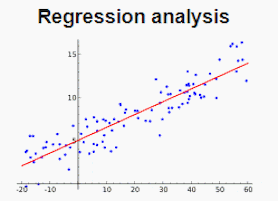Current and future financial trends play a massive role in the success or failure of businesses. Unless a company can accurately predict financial trends, it can be difficult to manage many aspects of a company, from sales to supplier sourcing. Imagine a company embarking on a new adventure to rehab and flip houses in 2008. The banking crisis that ensued would have guaranteed their failure. On the other hand it might have been a good time to open a business to help retrain laid-off workers for new positions. The following guide explores some of the methods that companies use to monitor and anticipate financial trends.
Internal Analysts
Large companies often have analysts that monitor a variety of market conditions. These analysts study all the factors that can impact product prices, commodity prices, labor prices, transport prices, and much more. Factors that impact prices include weather, consumer sentiment, political factors, and much more.
According to the U.S. Bureau of Labor Statistics:
- Logisticians analyze and coordinate an organization’s supply chain—the system that moves a product from supplier to consumer. They manage the entire life cycle of a product, which includes how a product is acquired, allocated, and delivered.
- Cost estimators collect and analyze data in order to estimate the time, money, materials, and labor required to manufacture a product, construct a building, or provide a service. They generally specialize in a particular product or industry.
- Financial analysts provide guidance to businesses and individuals making investment decisions. They assess the performance of stocks, bonds, and other types of investments.
- Accountants and auditors prepare and examine financial records. They ensure that financial records are accurate and that taxes are paid properly and on time. Accountants and auditors assess financial operations and work to help ensure that organizations run efficiently.
- Financial managers are responsible for the financial health of an organization. They produce financial reports, direct investment activities, and develop strategies and plans for the long-term financial goals of their organization.
External Analysts
In many cases, a single factor can drive many aspects of a financial trend. For example, an increase in gas prices (caused by refinery closed due to a hurricane) can lead to increases in prices for thousands of goods and services on the market. Since many goods and services utilize transportation for their delivery or execution, higher gas prices can have a significant impact on finances. See : Natural Disasters That Have Created Investment Opportunities
There are also professional risk monitoring companies, that use analytics to help other companies forecast and predict risk in specific industries. Credit Risk Monitor explains their service like this: ” CreditRiskMonitor is a web-based financial risk analysis and news service designed for credit, supply chain and financial professionals. We provide timely news, deep data and proven quantitative analytics to help you stay ahead of public company financial risk.” Services like this can help business ventures create a more stable financial environment.
Management analysts, often called management consultants, propose ways to improve an organization’s efficiency. They advise managers on how to make organizations more profitable through reduced costs and increased revenues. By bringing in “fresh eyes” they can often make recommendations that inside staff don’t see.
Regression Analysis

Operations research analysts use advanced mathematical and analytical methods like this to help organizations investigate complex issues, identify and solve problems, and make better decisions.
Managing Different Types of Risks
Through the analysis of financial trends, companies can effectively manage many different types of risks. One way they manage this risk is through the use of options. Options are a financial instrument, similar to stocks, bonds and futures. However, options are often used by companies as a way to hedge their risk.
For example, imagine that a water pump manufacturer needs to buy 20,000 tons of copper each month to manufacture their product. If the price of copper increases significantly, the company’s profit margins will be adversely affected. If the price of copper decreases, the company will make more money. While the company has a chance of making more money if the price of copper goes down, it isn’t in the copper business and it doesn’t want to risk the chance of it going up. To eliminate this risk, companies often will purchase options on their key materials. If the price of copper decreases or stays the same the option becomes worthless and the company spent money on the option for nothing. So this works much like an insurance policy on the price of strategic materials. While it doesn’t help the company make money, it does provide a more stable financial environment.
Tracking and managing financial trends can be extremely difficult for any business to keep track of. Make sure you are aware of the time and effort needed to be able to succeed at the highest level of competition.
You might also like:
- Natural Disasters That Have Created Investment Opportunities
- 3 Ways Natural Disasters Affect Fuel Prices Everywhere
- Hurricane Katrina: The Economics of Disaster
- Flood Coverage Isn’t Included in the Standard Homeowner’s Insurance
- Historically Devastating Hurricanes Would Cause Billions in Financial Losses
- Catastrophe Bonds
- Bank Runs Can’t Happen- Right?
